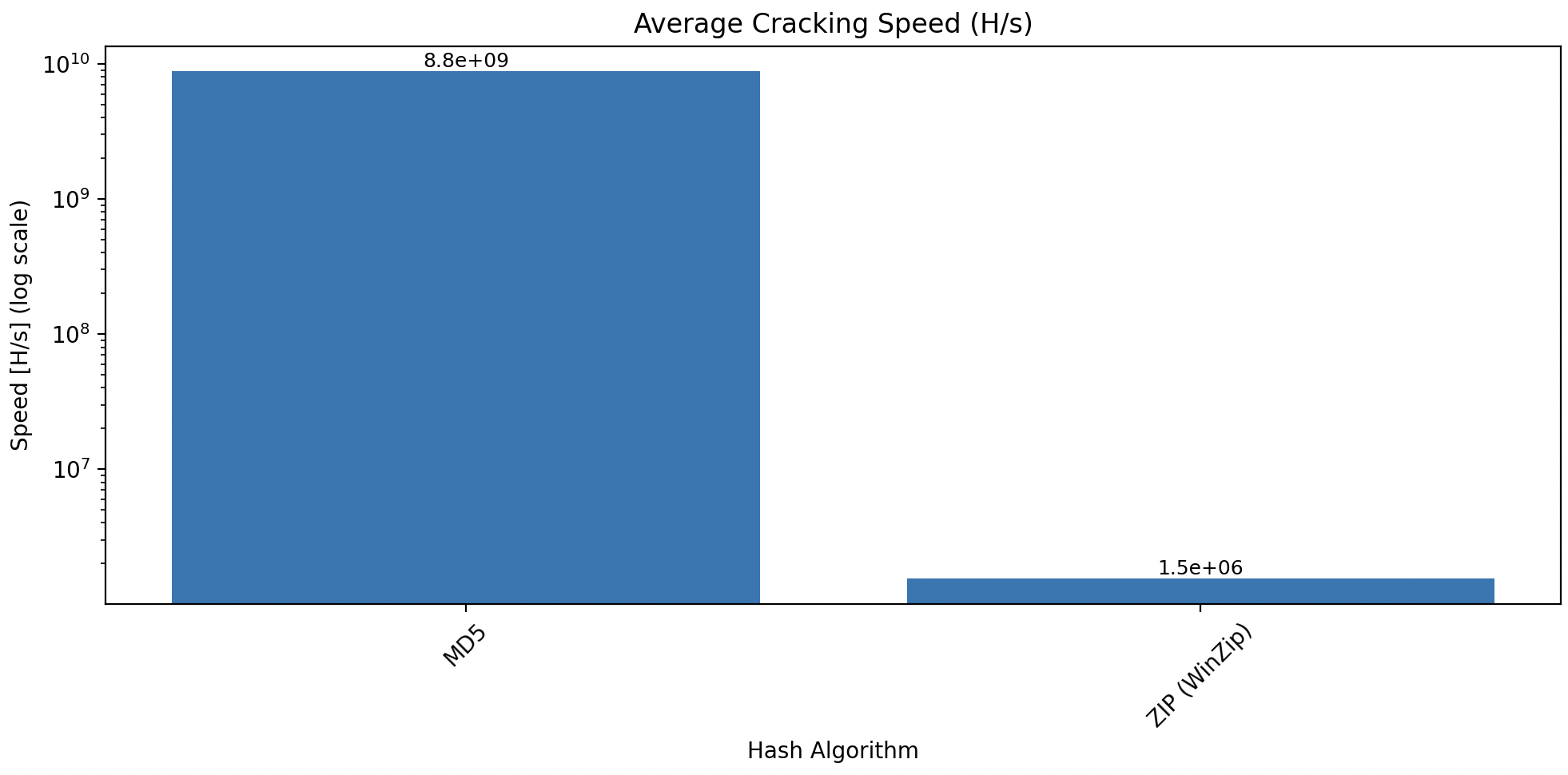With the recent release of Hashcat v7.0.0, including 58 new algorithms and support for the Assimilation Bridge and Python Bridge, it’s time to explore how it performs on Apple’s new M3 hardware.
This post documents an experiment I ran using my own benchmarking harness to compare speeds of selected algorithms (MD5, Argon2, ZIP) on Apple M3 using Python and log-scale graphs.
🔍 Why Hashcat v7.0 Is a Big Deal
According to Michal Sajdak, the new release brings:
- ✅ Support for 58 new algorithms (e.g., Argon2, LUKS2, GPG, OpenSSH)
- ✅
--identify: automatic detection of hash type based on sample input - ✅ 20 new tools for extracting hashes from various sources (e.g., BitLocker)
- ✅ Assimilation Bridge: seamless integration of multiple cracking engines (e.g., local CPU/GPU, remote GPUs, custom scripts)
- ✅ Python Bridge: define password crackers in Python for niche or unsupported algorithms
- ✅ Major performance improvements: up to 54% faster RAR cracking, 320% for scrypt, and broader Apple/AMD optimizations
So I set out to test it on a native Apple M3 Pro system.
🧪 Project Goals
- Benchmark selected hash algorithms: MD5, Argon2, ZIP, bcrypt, etc.
- Evaluate Apple M3 GPU/CPU performance with Metal/OpenCL backends
- Automate:
- Test execution
- Result parsing and CSV export
- Visual log-scale plots
📁 Repository Structure
🔗 GitHub Repo: CamilYed/hashcat-m3-tests
hashcat-m3-tests/
├── benchmark.py # Benchmark orchestration using subprocess
├── config/
│ └── algorithms.yaml # Declarative list of hash modes to test
├── config_loader.py # Loads and parses YAML config
├── plot_results.py # Generates log-scale performance bar charts
├── results.csv # Raw benchmark results (speed, time)
├── results.png # Plot exported from matplotlib
└── requirements.txt # Python dependencies
⚙️ How It Works
When benchmark.py is run:
- It loads supported hash modes from
config/algorithms.yaml - Asks the user which algorithms to benchmark
- Runs 3 repetitions per algorithm using:
hashcat -b -m <mode> --force - Captures output speeds and durations
- Stores the data into
results.csv - You can then run
plot_results.pyto generate graphs from CSV
📈 Sample Output
Here’s a benchmark comparing MD5 and ZIP (WinZip):
- MD5: ~8.8 billion H/s
- ZIP: ~1.5 million H/s
- Scale is logarithmic due to magnitude differences
🧠 Observations
- ✅ Hashcat runs natively using Metal/OpenCL on M3 without external GPU
- ✅ Argon2
mode 70000runs via Python Bridge withAssimilation Bridge - ❌ Some modes like
20100may require additional.somodules on macOS - ✅ CSV and plot automation makes it easy to compare across machines/algorithms
- 📉 Huge variance in speed across hash types (MD5 vs Argon2 vs ZIP)
📦 Supported Features
This project also lays the groundwork for:
- ✅ Custom YAML-based algorithm lists
- ✅ Optional hashcat
--identifyintegration (planned) - ✅ Better M3 support testing for Metal/OpenCL backends
- ✅ Future remote GPU support via Assimilation Bridge
🔚 Conclusion
This is an early exploration into using Python to benchmark Hashcat on Apple Silicon. It already provides reproducible measurements, customizable algorithm selection, and visual comparisons.
Next steps:
- Add automatic
--identifyhash detection integration - Include device info (CPU/GPU type, backend) in results
- Test more bridged modes (GPG, LUKS2, OpenSSH)
- Compare M1 vs M3 vs AMD/NVIDIA GPUs
🧪 Try it yourself:
📁 https://github.com/CamilYed/hashcat-m3-tests
If you have feedback or ideas (e.g., storing results over time, backend comparisons), feel free to open a GitHub issue or comment below.
Stay secure 💻🔐

